I left Singapore for KL on the 19th of May, and today my flight out of Phnom Penh will mark the end of all 6 weeks of my Travel Fellowship!
More on that soon, but firstly, since I haven’t done a proper blog post about Hanoi, here is the link to my audio from the week I spent there: https://soundcloud.com/isabella-nunez-331676613/talk-hanoi
The past 2-3 weeks in particular have given me a lot to compare and contrast. Moving from the rather quiet and less-populated Vientiane straight into the crowded Old Quarter district in Hanoi (especially given my less than optimal physical condition at the time) was overwhelming and jarring. Then, as I spent more time in Hanoi I grew used to the structure of sound and space there. In the 10-minute walk to find some good iced coffee I’d emerge covered in grime: sweat from the heat, added sweat from the stress of avoiding being hit by a motorbike, mud from the lack of walkable sidewalks, and the occasional aircon vent water droplet. The sounds of all the cars, motorbikes, and food vendors sharing the same small space is contrasted by the residential alleys, which are starkly quieter, and for me created a false sense of distance. As I moved on to Phnom Penh, I found that its layout lies somewhere between Hanoi and Vientiane in terms of sound. The sidewalks are semi-walkable and the roads are wider than Hanoi’s, but there is still more of a sense of traffic than in Vientiane. The average street is quiet enough to walk down in the day or even on a weekend night, but the crowded sounds of markets or nightlife can still be sought out in a few places in the city.
In looking to compare the alternative music scenes among these 5 cities, I’ve found that each place is quite distinct, both in how much and what kind of live music is available. For example, the proportion of how much of the audience or artist pool is expat versus local varies a lot: In KL there seemed to be very few expats on the alternative scene, in Phnom Penh there is a majority-expat audience, and in Hanoi there seemed to be a push for more local involvement in the scene (although many Vietnamese bands end up moving to HCMC). There are also places where ‘big’ or ‘successful’ musicians make sure to stop through (eg. Bangkok and Singapore), and places which they do not (eg. Vientiane and Phnom Penh). This affects smaller venues, I feel, by changing the average level of ‘professionalism’ for music scenes. For this reason, although I was the most impressed by the alternative artists I heard playing in Bangkok and Hanoi, I myself had the most fun as a musician in Vientiane and Phnom Penh. In the past week, I have found that Phnom Penh boasts multiple small shows or open mic/jam sessions every day of the week, which seems much higher per-capita than other cities I have spent time in. For the last night of my Travel Fellowship, I decided to go to one last small concert at a bar (okay not my last last, but symbolically the last of this trip), alone as always. I was surprised to find that on my way to the venue and at the show I ran into several musicians I had met just this week. I think, in part, since I have been moving every week or so this summer, I have started to feel the lack of any type of community around me, and so seeing that I had entered one even just a slight bit during my time in Cambodia was a really nice realisation for my last night.
In the past couple of days, as I’ve published my song from Hanoi and finished writing my song here in Phnom Penh, I’ve been trying to grapple with my denial that this Travel Fellowship is ending, and to synthesise some things I’ve learned. Since this was a very personal trip for me, although I feel I have learned a lot about this region and these cities in particular, I’ve decided just to write about the things which feel most personal: playing music and doing things alone.
I started teaching myself guitar a year and a half ago, and almost a year ago got my first guitar (or more accurately, took it from my uncle’s attic in California). Since the whole thing is relatively new to me, I often feel very intimidated in professional music settings, but this summer has encouraged me to not compare myself to others as much. I have improved my guitar skills along the way, but the focus has been more experimental, and I have never felt pressured to improve. Probably more importantly, I have also improved my performing skills. I’ve learned that performers are always better when they’re having fun and enjoying the music themselves. Although I have never really planned on pursuing music as a career, the feeling of this is applicable to many other aspects of life for me.
The other impactful self-improvement mission this Travel Fellowship has given me is learning how to be alone. Although I’ve met up with some friends here and there, and of course have made friends in hostels, I haven’t been traveling with anyone for the full 6 weeks, and I definitely felt the impact of that length of time. I think the elements of loneliness, which I felt most strongly actually just during the first two weeks or so, are often compounded by spending time in large cities. After all, there are so many people surrounding you, and those people are often sharing their experiences with family and friends, which highlights how you do not have anyone around to share this with. So part of this trip has been overcoming loneliness, but then another part has been realising I do not have to be constantly making friends in order to have a good time. This means being outgoing enough to invite strangers to visit music venues with me or come to my gigs, but also being okay going to these things by myself or spending a night in if i need it.
This summer has definitely been the most unique journey of my life. And while I am sad to see it end, I am very glad to know that it has stirred many things for me which will continue being a part of my life for years to come.
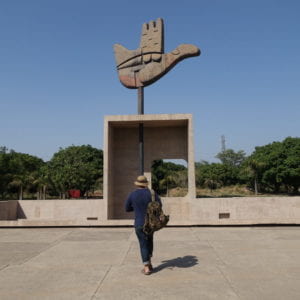
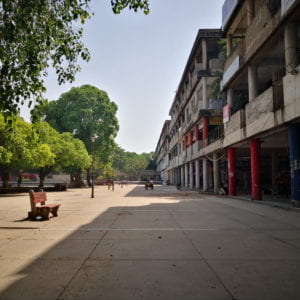
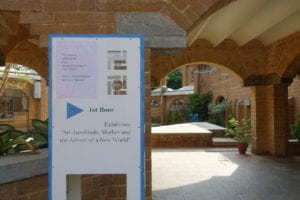
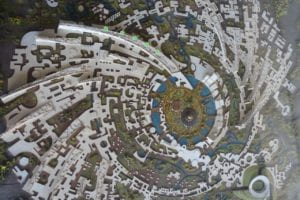
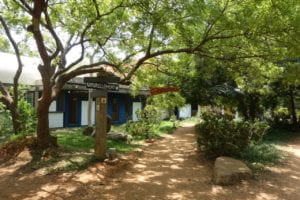
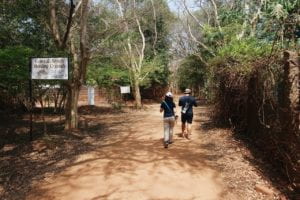
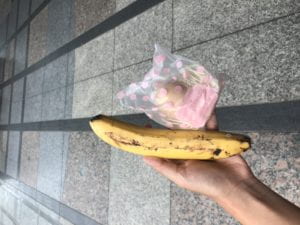 The banana and egg I received as gifts :’)
The banana and egg I received as gifts :’)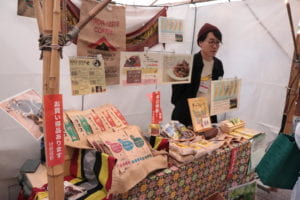 The kind employee sharing about ethical bananas – at an organic mini farmer’s market right outside Takashimaya Shinjuku!
The kind employee sharing about ethical bananas – at an organic mini farmer’s market right outside Takashimaya Shinjuku!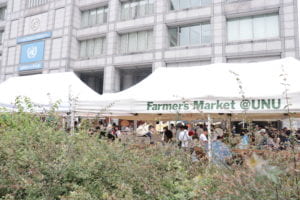 Farmer’s Market at the United Nations University (every Saturday!)
Farmer’s Market at the United Nations University (every Saturday!) The farmer whom brings ugly food to his stall at the UNU Farmer’s Market
The farmer whom brings ugly food to his stall at the UNU Farmer’s Market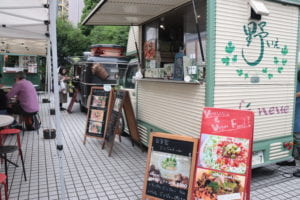 Surprisingly affordable vegan food at UNU Farmer’s Market!
Surprisingly affordable vegan food at UNU Farmer’s Market!